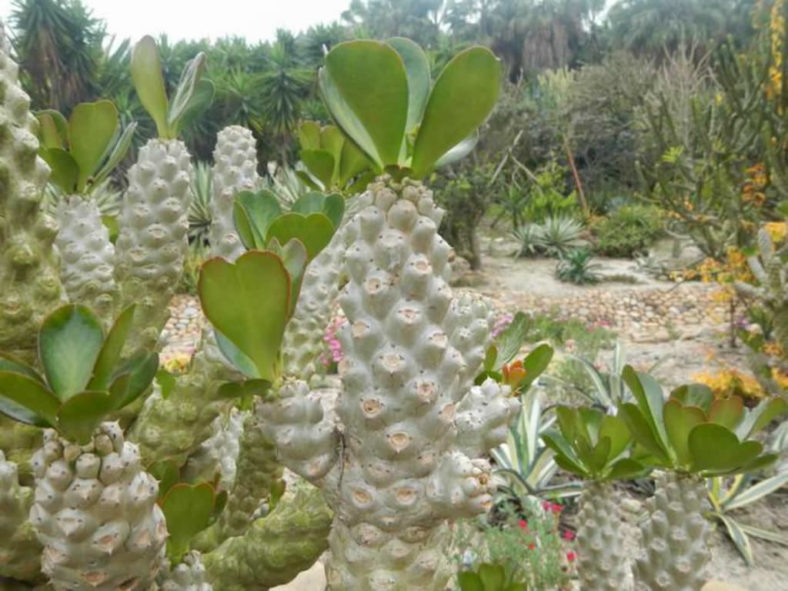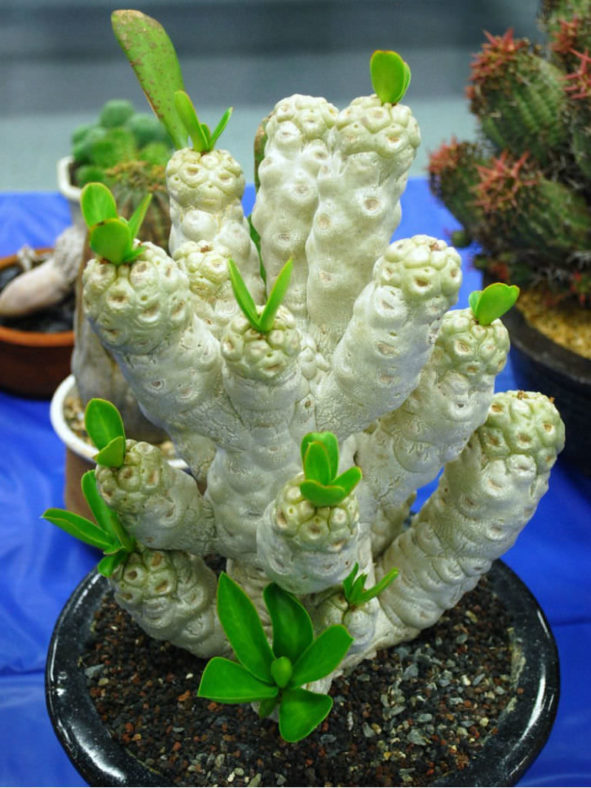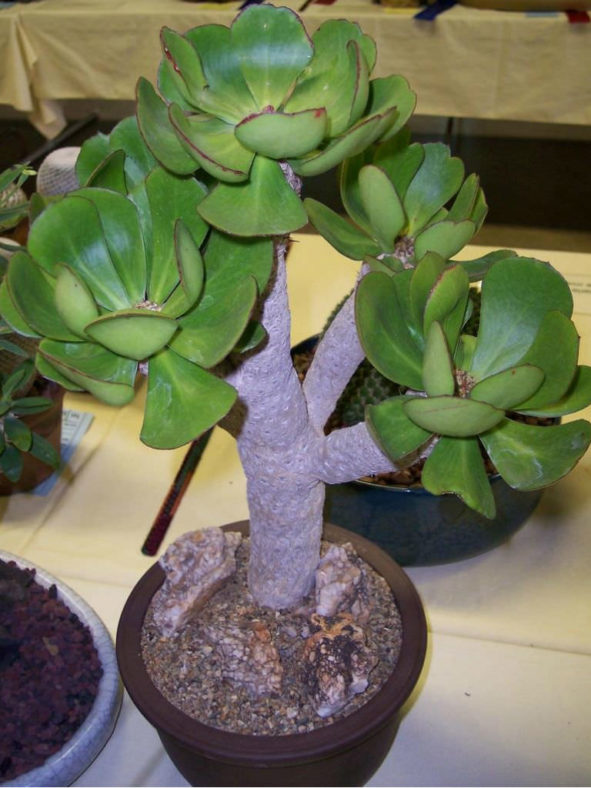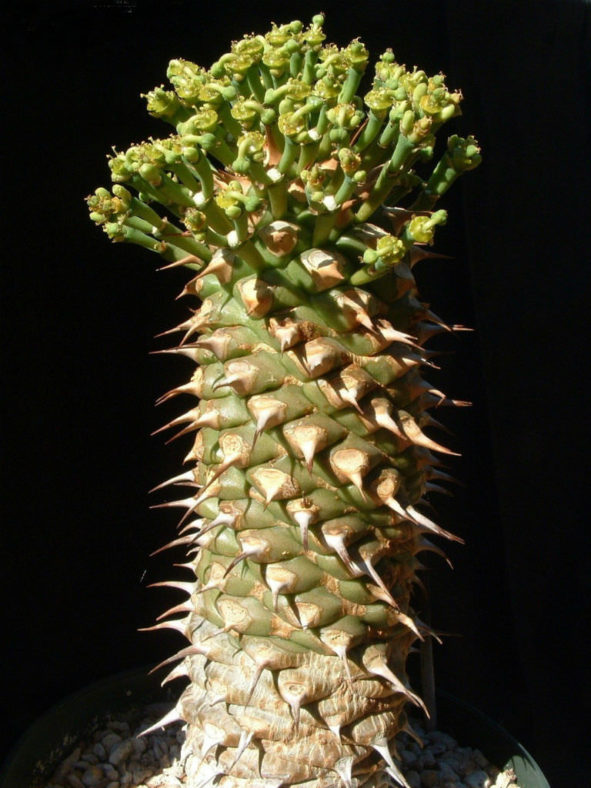Scientific Name
Euphorbia poissonii Pax
Synonym(s)
Euphorbia poissoni
Scientific Classification
Family: Euphorbiaceae
Subfamily: Euphorbioideae
Tribe: Euphorbieae
Subtribe: Euphorbiinae
Genus: Euphorbia
Etymology
The specific epithet "poissonii" (pronounced "poy-SON-ee-eye") honors Henri Louis Poisson (1877-1963), a French botanist.
Origin
Euphorbia poissonii is native to West Tropical Africa (from Guinea to Nigeria) and Gabon. It occurs on rocky hills in the savannah.
Description
Euphorbia poissonii is an erect, much-branched succulent shrub with stout, cylindrical, silvery-grey branches that have large, pale green leaves at the top during the growing season. It can grow up to 6.6 feet (2 m) tall. The branches are thick, fleshy, and smooth, measuring up to 1.6 inches (4 cm) in diameter, sometimes with rudimentary spines or with spines present only on young plants. The deciduous leaves are spoon-shaped or triangular, with a notched or truncated apex, and can measure up to 5.6 inches (14 cm) long and 2.8 inches (7 cm) wide.
The flowers are pale greenish with red stamens and appear in spring (at the end of the dry season in the plant's native habitat). They can reach a diameter of 0.5 inches (1.3 cm).

Forms of Euphorbia poissonii
How to Grow and Care for Euphorbia poissonii
Hardiness: USDA hardiness zones 10a to 11b: from 30°F (-1.1°C) to 50°F (10°C).
Euphorbias are very easy to care for. These plants require a little pampering to become established, but once they are, they are self-sufficient. More die from too much care and watering than from neglect. Euphorbias need well-draining soil and lots of sunlight. They are not particular about soil pH, but cannot tolerate wet soil. Unlike most succulents, Euphorbia does not handle long periods of drought well. It may need weekly watering during the summer. Water whenever the soil is dry several inches below the surface. Water deeply, but don't let them sit in wet soil, which can cause root rot. Add some organic matter or fertilizer to the planting hole. If you are growing them in containers or your soil is poor, feed them with a half-strength fertilizer monthly.
These succulents can be grown from seed, but they can be difficult to germinate or even find. They are usually propagated by cuttings. This can be tricky because of the exuding sap. Rooting hormone is recommended with Euphorbia. They tend to grow problem-free, but there are a few pests and diseases to be alert for.
See more at How to Grow and Care for Euphorbia.
Warning: When a plant is damaged, it exudes a thick, white, milky sap known as latex. This latex is poisonous and contains some of the most potent irritants known. It is particularly dangerous for the eyes, skin, and mucous membranes, so pay extreme attention not to get any in your eyes or mouth.
Links
- Back to genus Euphorbia
- Succupedia: Browse succulents by Scientific Name, Common Name, Genus, Family, USDA Hardiness Zone, Origin, or cacti by Genus
Photo Gallery
Click on a photo to see a larger version.


